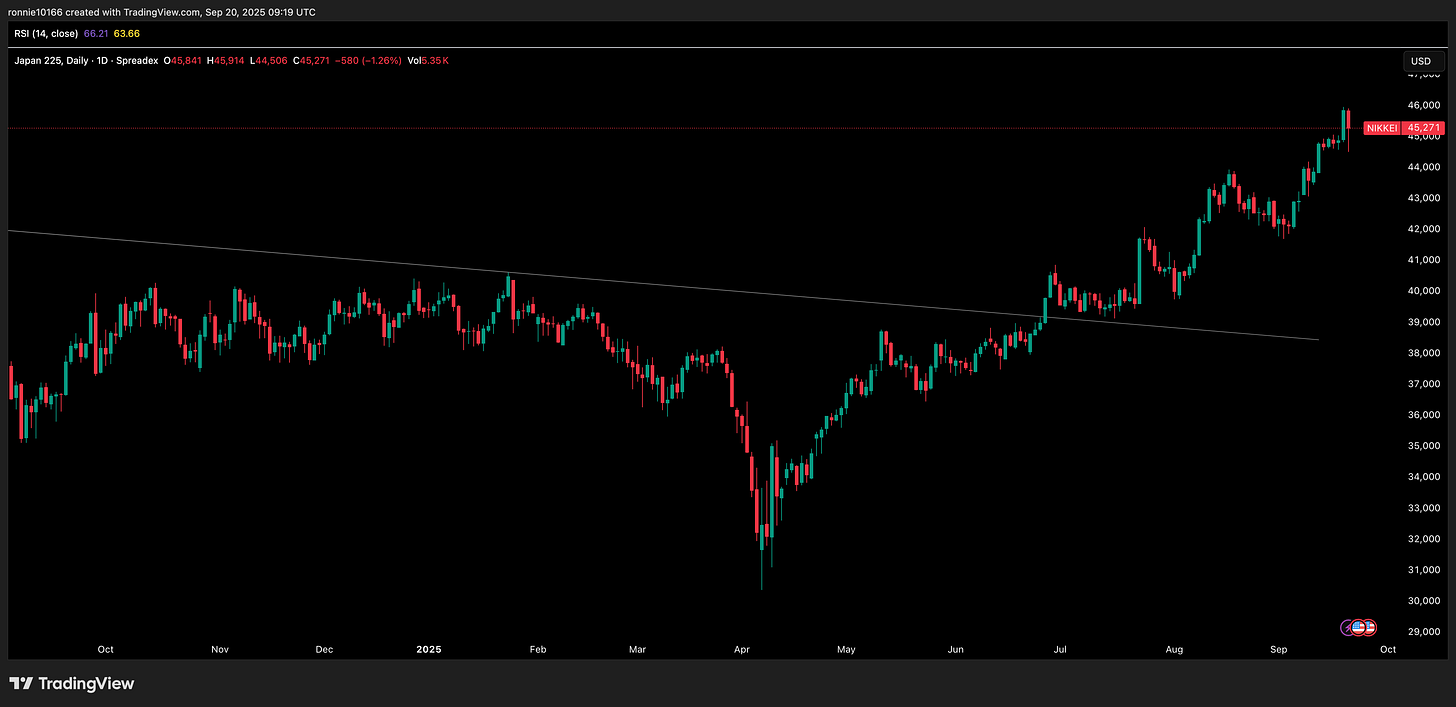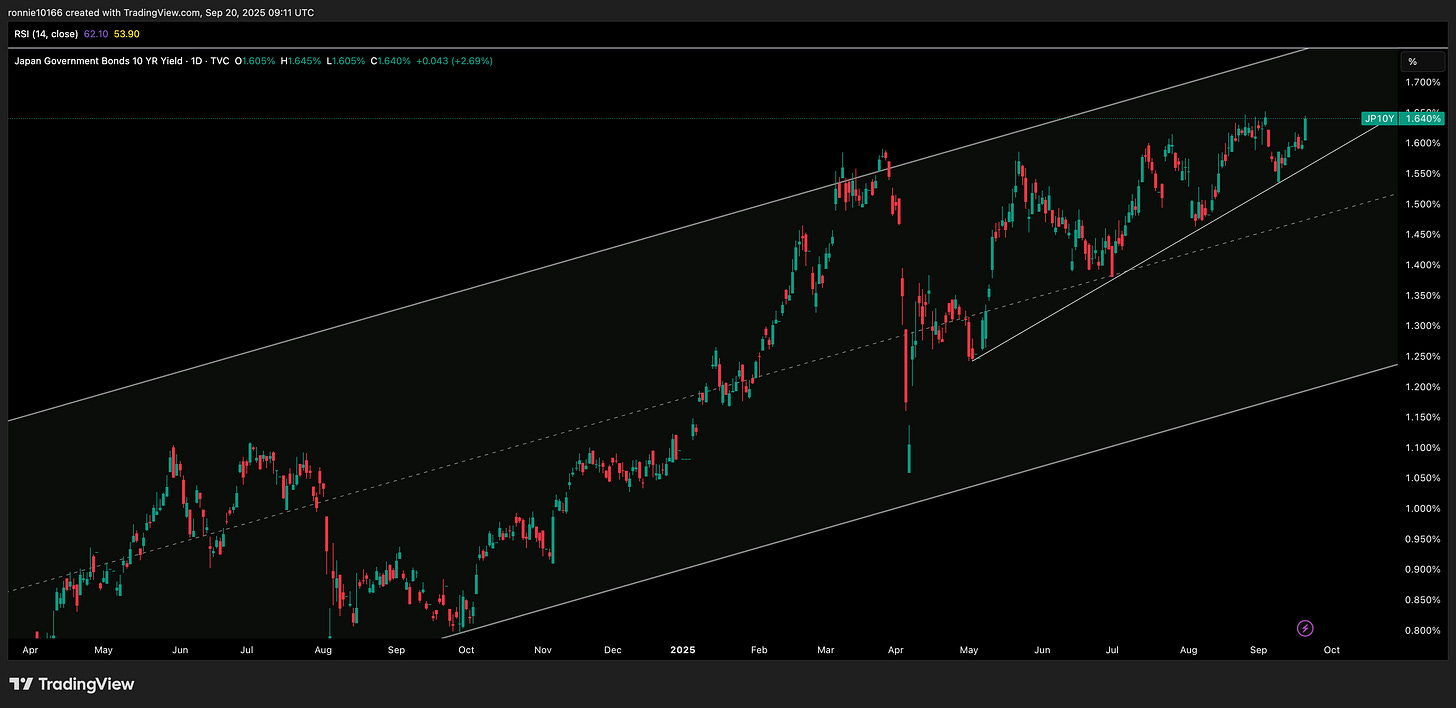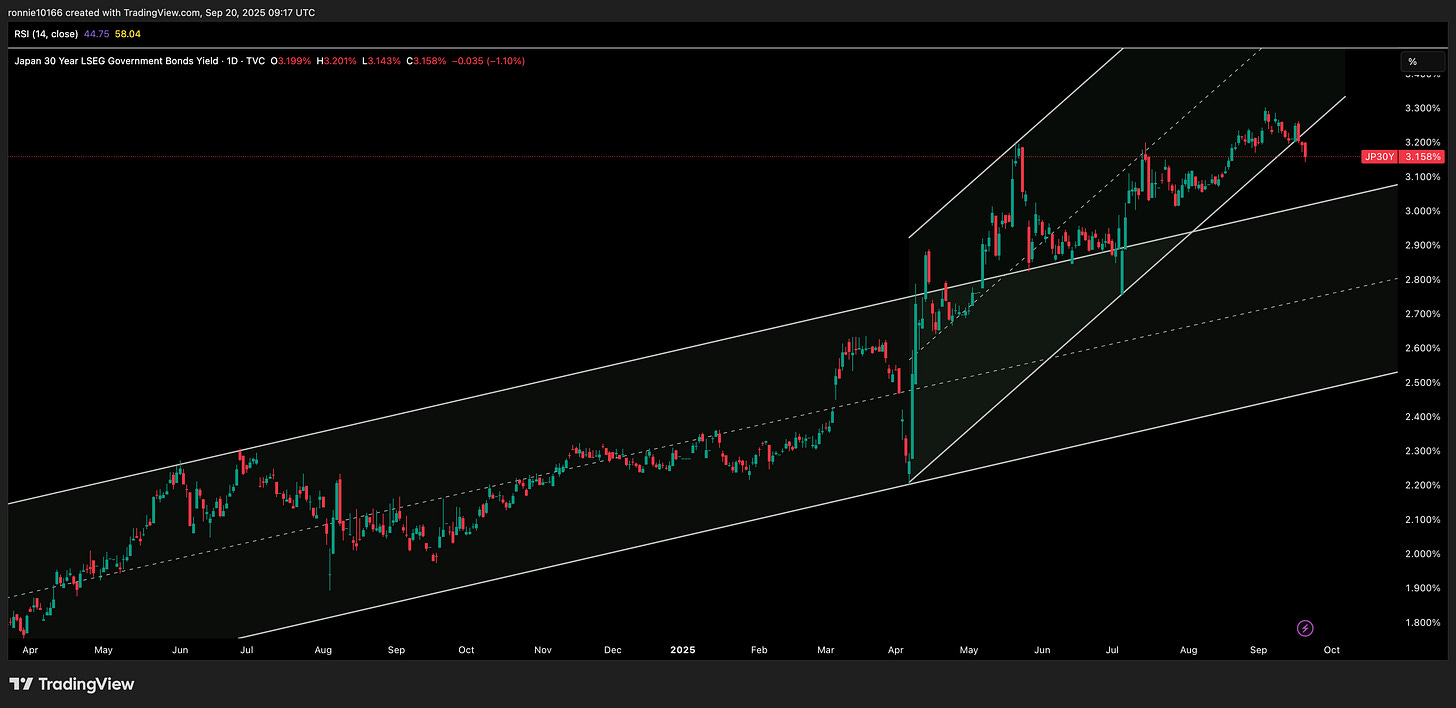Bank of Japan Roils Markets
Stock market down, 10 year rates up, 30 year rates down
Important moves happening in markets as a hold in rates in Japan asks many questions.
BoJ disposing of ETFs and REITS signals a move to start winding down it’s asset purchases over the years, spooked the Japanese stock markets, caused a big sell-off in 10 Year Japanese Government Bonds but 30 year bonds rallied hard.
This is a knee-jerk reaction but the fear is palpable. BoJ owns 53% of outstanding JGBs and mostly around 10 years duration. Not only would a systemic program to unload bonds flood the market, but it would also be a massive drain in cash liquidity. Offsetting the liquidity loss would be a debasement of the Yen. Realised losses at the Bank of Japan would be enormous and subject to public scrutiny.
Have they opened Pandora’s Box?
Bank of Japan Monetary Policy Meeting (September 18-19, 2025) Key Decisions
Interest Rate Policy: By a 7-2 majority vote, the Policy Board decided to maintain the uncollateralised overnight call rate at around 0.5%, continuing accommodative financial conditions.
Asset Holdings Disposal: Unanimously agreed to begin selling exchange-traded funds (ETFs) and Japan real estate investment trusts (J-REITs) in line with principles to minimise market disruption. The sales scale will match that of previously disposed stocks from financial institutions (completed in July 2025). The ETF lending facility, introduced in 2019, will be discontinued.
Economic Assessment
Japan's economy has shown moderate recovery with some weaknesses, influenced by global trade policies including U.S. tariffs.
Exports and industrial production remain flat; corporate profits are high but pressured by tariffs; business fixed investment is moderately increasing; private consumption is resilient amid improving employment and income, despite price impacts; housing investment is weak, and public investment is flat.
Inflation: Year-on-year CPI (excluding fresh food) is at 2.5-3.0%, driven by food price rises (e.g., rice); inflation expectations are rising moderately.
Outlook
Economic growth is expected to moderate initially due to overseas slowdowns and tariff effects, then rise as global economies recover.
Underlying CPI inflation may be sluggish short-term but is projected to increase gradually, aligning with the 2% price stability target in the second half of the July 2025 Outlook projection period, supported by labor shortages and rising medium- to long-term expectations.
Risks and Dissenting Views
High uncertainty around trade policies, overseas economic reactions, and impacts on financial/foreign exchange markets and Japan's activity/prices.
Dissenters (Takata Hajime and Tamura Naoki) proposed raising the rate to 0.75%, citing a shift from deflation, achievement of the price target, and upside price risks nearing the neutral rate.
Bank of Japan Statement on Monetary Policy 19 September 2025
Nikkei 225 Daily
Japan 10 Year Government Bond Yield Daily
Japan 30 Year Government Bond Yield Daily





